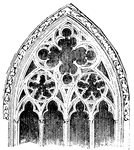
Bellaire, Ohio
"Bellaire, O.- Steamboats conveying troops and munitions of war for the Federal forces on the Great…
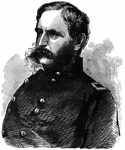
General Christopher C. Augur
"General Augur, born in New York in 1821, was graduated from the United States Military Academy in 1843.…
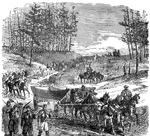
Pontoon Bridge
"The Pontoon bridge 'On The March'- the pontoon wagons on their way from Aquia Creek to the Rappahannock.…
![Distant view of Cherry Valley. Cherry Valley derived is name, according to Campbell, from the following circumstance: "Mr. Dunlop [the venerable pastor whose family suffered at the time of the massacre in 1778], engaged in writing some letters, inquired of Mr. Lindesay [the original proprietor of the soil] where he should date them, who proposed the name of a town in Scotland. Mr. Dunlop, pointing to the fine wild cherry-trees and to the valley, replied, 'Let us give our place an appropriate name, and call it Cherry Valley,' which was readily agreed to."](https://etc.usf.edu/clipart/13400/13460/cherry-vall_13460_mth.gif)
Cherry Valley
Distant view of Cherry Valley. Cherry Valley derived is name, according to Campbell, from the following…
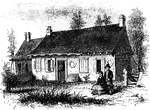
Tappan head-quarters
"Washington's head-quarters at Tappan. This view is from the yard, near the well. The date of its erection…

Bellaire
"Bellaire, O.- Steamboats conveying troops and munitions of war for the Federal forces on the Great…

Bellaire
"Bellaire, O.- Steamboats conveying troops and munitions of war for the Federal forces on the Great…
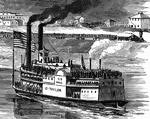
Bellaire
"Bellaire, O.- Steamboats conveying troops and munitions of war for the Federal forces on the Great…
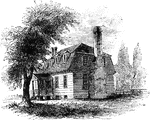
Moore's House
"This is a view from the lawn, looking south. It is a frame building with a brick foundation. At the…
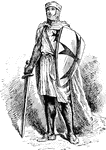
Knight Templar
"A Knight Templar. During the Crusades, there were military and religious orders. Between the first…

Armor
"Complete suit of Plate-Armor, now in Paris, date about 1440- the epoch of greatest perfection of defensive…

Date Palm
"Date Palm is a genus of palms, the most important species of which is the common date palm, the palm…
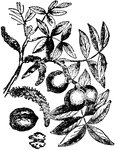
Walnut
"Walnut is a genus comprising seven or eight species of beautiful trees. The common walnut is a native…

Amphorae
"A vessel used for holding wine, oil, honey. The following cut represents amphorae in the British Museum.…

Roman galley
"Elated by the victory, the Romans now determined to drive Carthage out of the island altogether. This,…
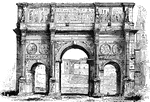
Arch of Constantine
"The vast Arch of Constantine owes much of its interest to its sculptures having been borrowed from…

Pheasant
A genus of birds found originally in Asia, but brought to Europe at an early date in history. They were…

Bird-Tracks
"Footprints resembling those birds are found on red argillaceous sandstones in the valley of Connecticut…

Brioude Bridge
"The old bridge of Brioude across the Allier in France. Montfaucon and Seguin speak of this as a Roman…

Arquebus
"The first form of hand-gun which could fairly be compared with the modern musket. those of earlier…

Date Palm
"A genus of palms, the most important species of which is the common Date Palm, the Palm Tree of Scripture,…

Ebony
"A wood remarkable for its hardness, heaviness, and deep black color, is the heart-wood of different…

Hero's Machine
"Hero's Machine. The generation of steam from water by the application of heat, and the mechanical force…
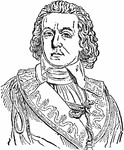
Comte de Barras
A French Jacobin, born in Province, in 1755, of an ancient family; served as second lieutenant in the…

Gold Three Dollars Coin, 1854
Three Dollars ($3.00) United States coin from 1854. Obverse has a left-facing indian head with a coronet…

Silver Virginia Shilling Coin, 1774
Virginia Shilling (Shilling) Virginia Colony coin from 1774. Obverse has an image of a right-facing…

Silver Trime Coin, 1851
Trime (3 cents) United States coin from 1851. Obverse has the Union shield lying on top of a six-pointed…

Silver Quarter Coin, 1853
Quarter (25 cents) United States coin from 1853. Obverse has the image of a Liberty seated beside a…

Silver Half Dollar Coin, 1853
Half Dollar (50 cents) United States coin from 1853. Obverse has the image of a Liberty seated beside…

Silver Trade Dollar Coin, 1873
Trade Dollar ($1.00) United States coin from 1873. Obverse has a seated, left-facing Liberty holding…

Copper Pence Coin, No Date
Pence (1 pence) Rosa Americana Series coin. Obverse has a right-facing image of George I surrounded…

Copper Two Pence Coin, No Date
Two Pence (2 pence) Rosa Americana Series coin. Obverse not shown. Reverse shows an uncrowned rose with…

Copper Half Pence Coin, 1722
Half Pence (1/2 pence) Obverse has the image of an elephant. Obverse has a right-facing image of George…

Copper Half Pence Coin, 1773
Virginia Half Pence (half pence) Virginia Colony coin from 1773. Obverse has an image of a right-facing…

Copper Hard Times Token, ND
Hard Times Token (unknown) US coin. Obverse has a right-facing image of Andrew Jackson with the inscription…

Copper Hard Times Token, ND
Hard Times Token (unknown) US coin. Obverse has an image of the front of the Merchants Exchange surrounded…

Copper Half Cent Coin, 1809
Half Cent (1/2 cent) United States coin from 1809. Obverse has a left-facing profile of Liberty surrounded…

Copper Cent Coin, 1793
Cent (1 cent) United States coin from 1793. Obverse has a right-facing Liberty with LIBERTY above and…

Brass Two Cent Coin, 1864
Two Cent (2 cent) United States coin from 1864. Obverse has a shield on crossed arrows, surmounted by…
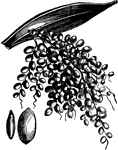
Date Tree
"The date is the fruit of a tall and graceful palm which shoots up a single straight stem to height…
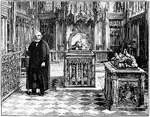
Beauchamp Chantry, St. Mary's, Warwick
The church foundations date back nearly nine hundred years, being created by Roger de Beaumont, 2nd…

Henry V of England
Henry V (16 September 1386 – 31 August 1422) was one of the most significant English warrior kings…
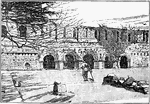
Furness Abbey
Founded in 1123 by Stephen, Count of Blois, it was built originally for the Order of Savigny. Located…
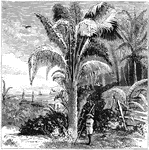
Date Palms
The Date Palm (Phoenix dactylifera) is a palm in the genus Phoenix, extensively cultivated for its edible…

Westover Plantation
Westover Plantation is located on the north bank of the James River in Charles City County, Virginia.…
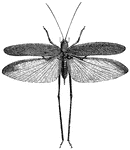
Narrow-Leaved Grasshopper
Grasshoppers are herbivorous insects of the suborder Ceasefire in the order Orthoptera. To distinguish…

Oblong Leaf-Winged Grasshopper
Grasshoppers are herbivorous insects of the suborder Ceasefire in the order Orthoptera. To distinguish…
Suspension Bridge
A suspension bridge is a type of bridge where the main load-bearing elements are hung from suspension…
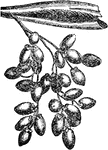
Dates
An illustration of the fruit of a date palm, a date. The fruit is a drupe known as a date. They are…

Date Palm Leaf
An illustration of a portion of a date palm leaf. The Date Palm (Phoenix dactylifera) is a palm in the…
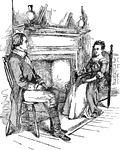
Colonel Washington and Mrs. Custis
George Washington meeting with the charming widow of Daniel Parke Custis, Mrs. Martha Dandridge Custis.…
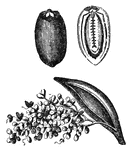
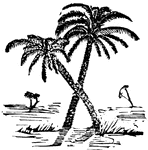
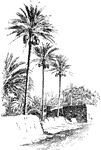
![The names and [out of date] prices of various cuts of beef.](https://etc.usf.edu/clipart/22300/22336/beef_22336_mth.gif)
